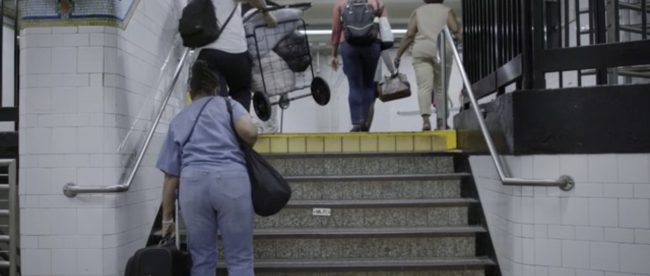Elevator Pitch: A Short Movie Highlights The Need For Accessibility In Public Transit Systems
Every major city provides public transportation to its residents but how many really care about making there stations accessible for disabled people? The lack of accessibility in particularly one city’s transit system – New York City’s Subway, is very well highlighted in this short movie called “Elevator Pitch” by Martyna Starosta.
The film features voices of many people in MTA’s (Metropolitan Transit Authority) board meetings over a period of one year, where they are heard begging and pleading board members to get elevators at stations. Turns out, only 24% of stations in the Subway system have elevators, and many of them actually break down on an average 25 times per day. Not only is the lack of accessibility appalling, but whatever little the city offers is unreliable and unusable. The movie shows people struggling on the many stairs at these stations. At one station, there is a man in a wheelchair who literally drags himself up the stairs while another fellow commuter carries his wheelchair for him to the platform. We see this man struggle for many minutes. What could have been a breeze is an ordeal. In another instance, an elderly woman is just about to get on an escalator when it suddenly stops. She immediately get frustrated, cusses, and walks away.
One of the busiest and most popular transit system’s lack of focus on accessibility only makes one think what must happen in other cities around the world. Are there places that are worse? Most likely. Disability advocates fight for disabled people’s rights and make sure they get what they deserve, even if it’s in small steps, piece by piece. After watching this movie, one cannot help but think about every individual’s role in making our own society accessible. Of course, transit systems are huge initiatives that require local government’s involvement, but each person should have the ability to recognize this as a need, and make sure to voice their opinions in their local communities to make transit systems, public places, and other areas accessible for people with disabilities.
Source: Time


Leave a comment